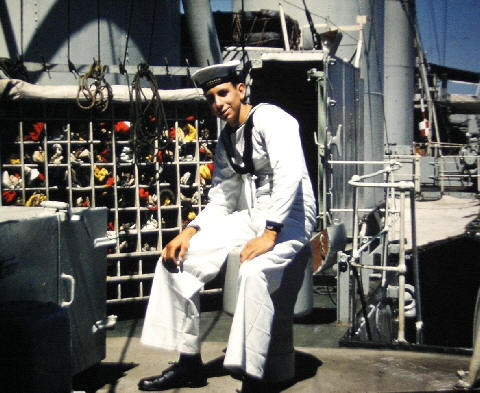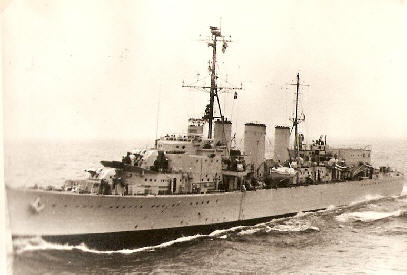SEA TRIALS
Regarding the days of the sea trials, it is perhaps worth mentioning that we did some high-speed runs to test the boilers, etc. Manxman, of course, was built as a very fast minelayer. We were told that she was possibly the fastest ship in the world – maximum speed of about 42 knots. To steam at such high speed in a ship of her size (over 2600 tons) is a rare experience. Everyone was warned to stay below decks during those runs. The ship shuddered frighteningly from stem to stern and the spray generated by her bows came right over the top of the superstructure. I wish I could have viewed it from a safe spot on, say, a nearby vessel. It must have been an amazing sight. I guess all ships shudder somewhat when moving at a good speed, but below decks aboard Manxman, during those brief trials, was a pretty amazing experience. The vibration was incredible. All credit to the ship’s builders that she could survive such a trial. I wonder if any vessels of such size could exceed the speed of those minelayers?
Looking back through some old letters that I wrote at the time, it appears that Manxman achieved about 38 knots maximum during the trials of 1956 and that speed was sustained for about half an hour.

Picture: Mike Salts on the Flagdeck of HMS Manxman
Of course we had to do quite a lot of gunnery practice at intervals. Our four-inch guns were the heaviest armament on board, though there were Bofors anti-aircraft weapons too. During action stations and gunnery practice I had a role in the Transmitting Station where the equipment was housed for keeping the heavy guns on target. It was a fairly small compartment deep in the lowest bowels of the ship, equipped with something akin to a computer (albeit an ancient one!) operated by 5 or 6 men. Our task was to operate the various controls of the ‘computer’ to ensure that the movements of the ship did not cause the guns to go off-aim. The T/S was not a pleasant place to work, especially when we were sailing through areas where it was thought mines had been laid. Escape from the T/S in emergency would have been a forlorn hope, I guess, in a real emergency. In such a small space, occupied by several hot and sweaty bodies, the air was usually thick and the ventilation less than adequate. I recall one occasion when the Gunnery Officer came down to observe the men at work. He was smoking a foul-smelling pipe and pouring clouds of blue smoke over us as we tried desperately to concentrate on the task in hand. Not a pleasant memory. During the Suez Crisis we spent many hours in that airless rat-hole, relying on situation reports on the loudspeaker to let us know what was happening topside. On occasions the temperature reached 120 degrees.
Next Page - Exercises & Tasks

Picture: HMS Manxman at sea
-0-